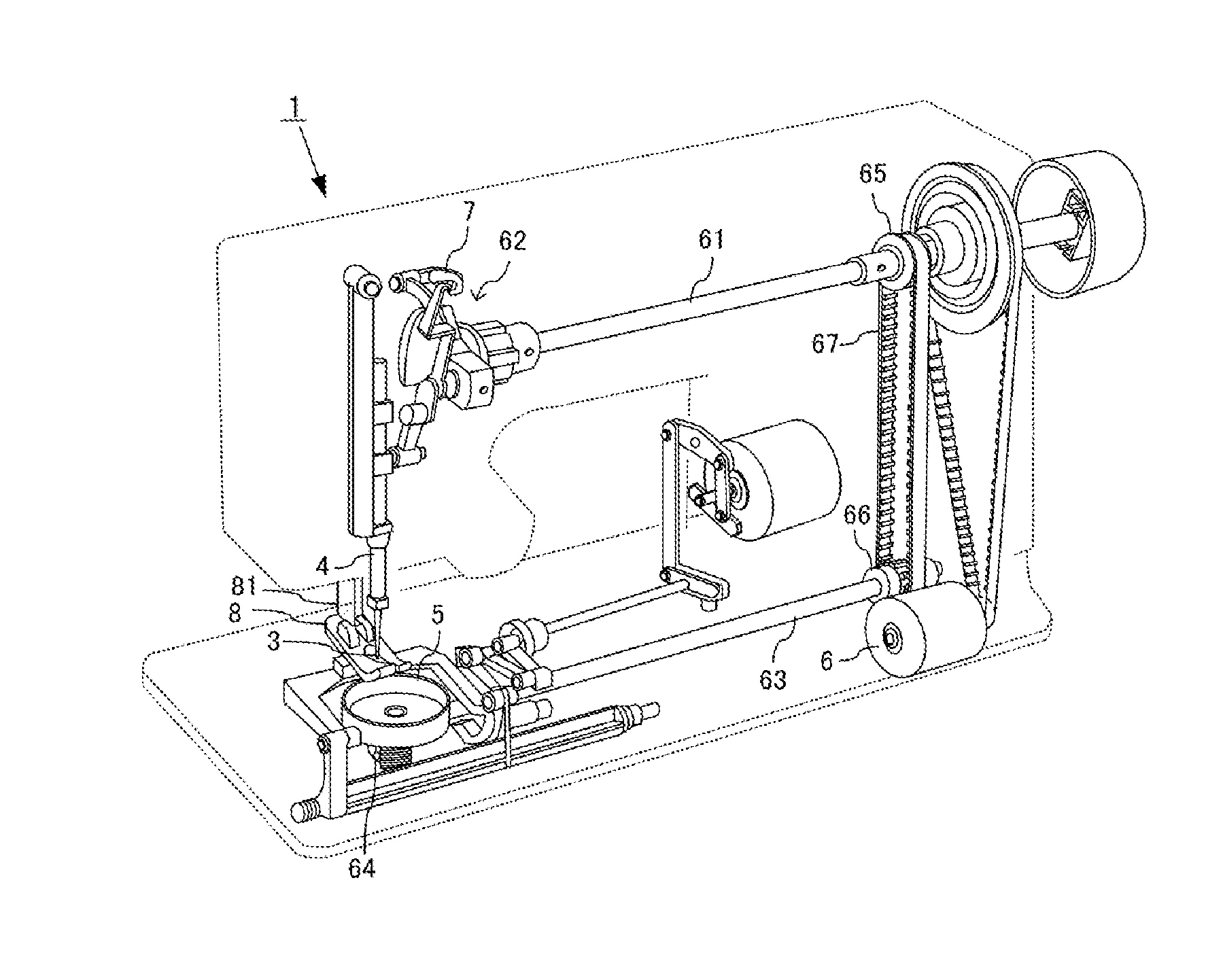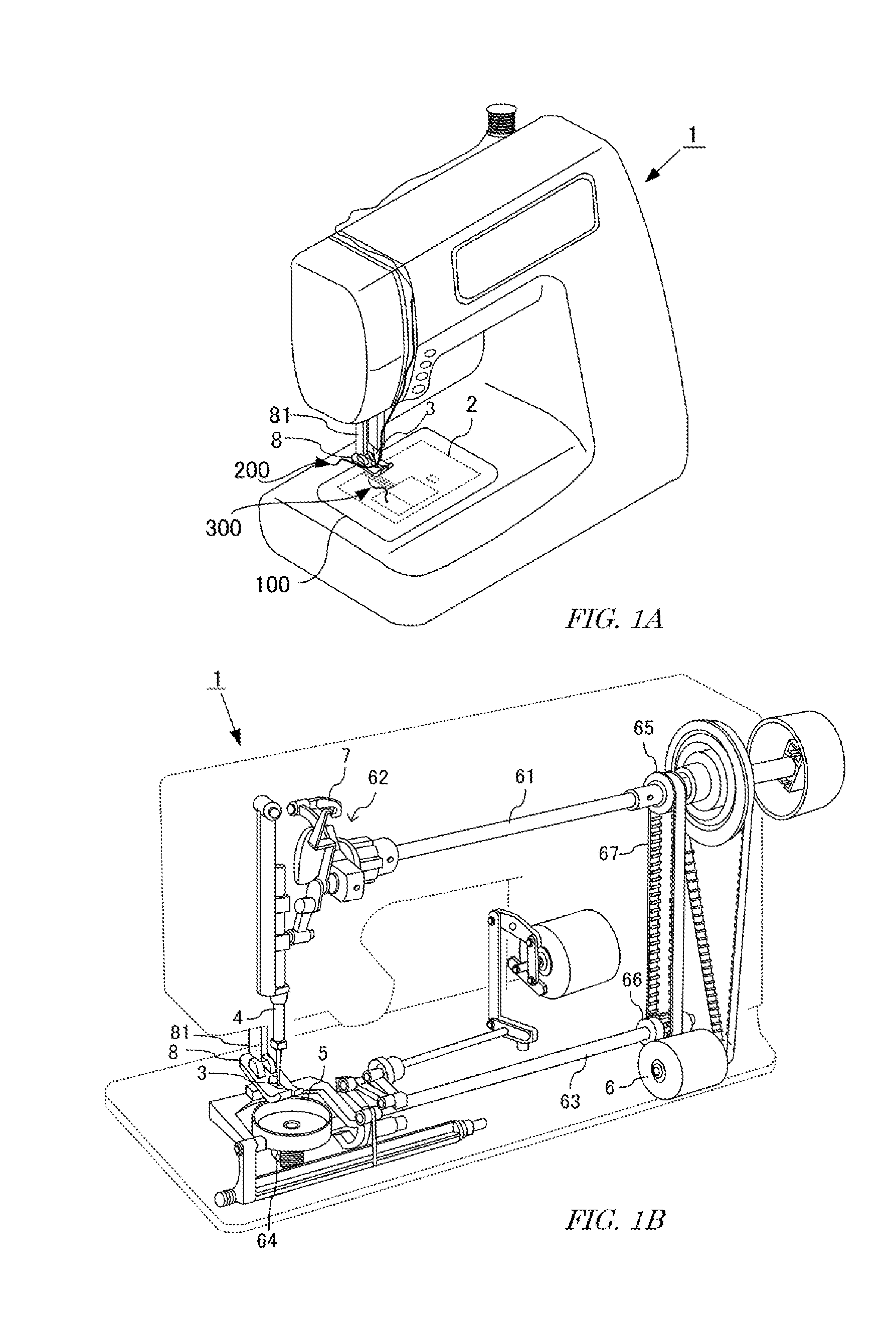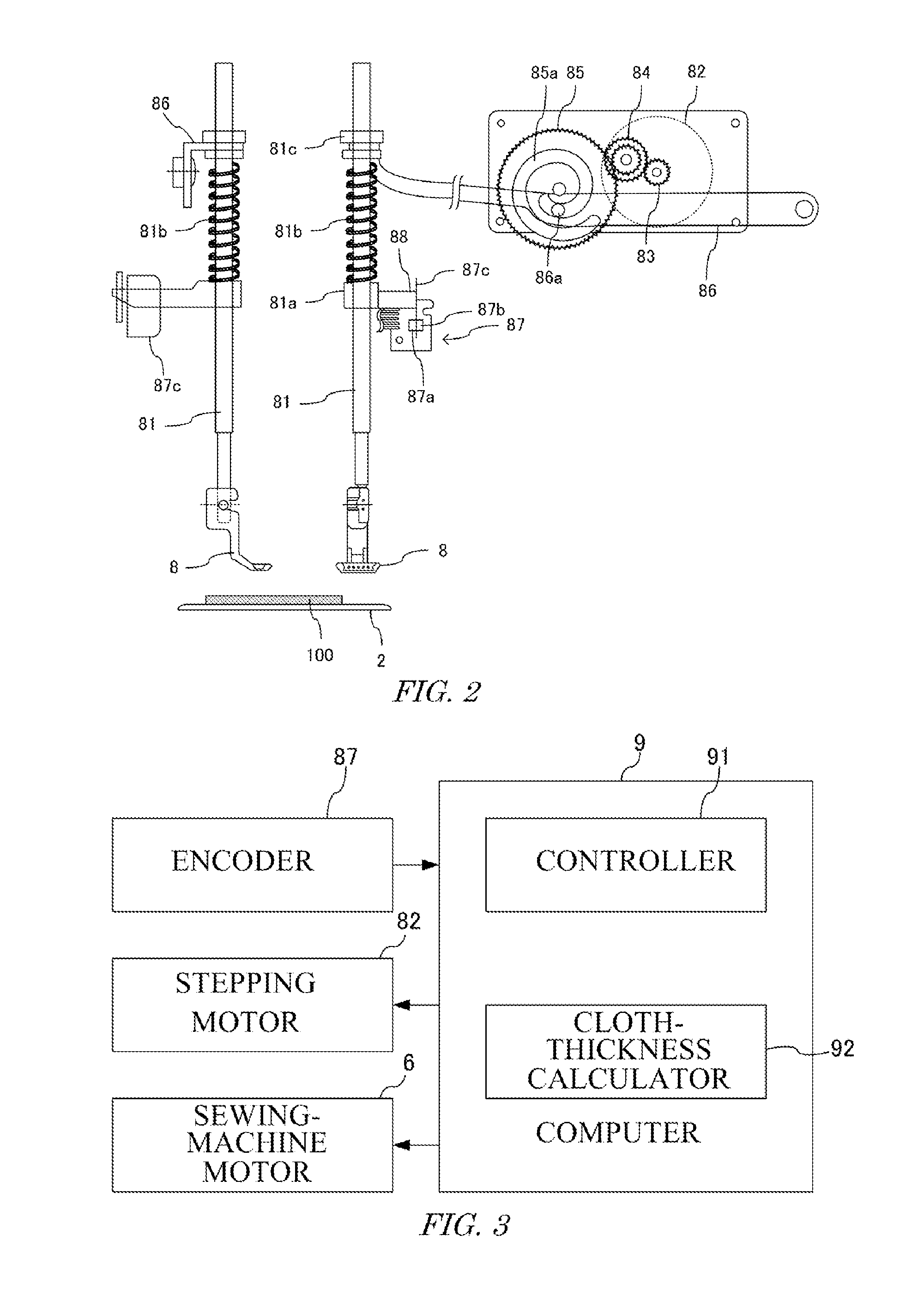Sewing Machine
- Summary
- Abstract
- Description
- Claims
- Application Information
AI Technical Summary
Benefits of technology
Problems solved by technology
Method used
Image
Examples
Embodiment Construction
Entire Structure of Sewing Machine
[0037]As illustrated in FIG. 1, a sewing machine 1 is a home, professional or industrial machine that locates a needle 3 while holding a cloth 100 mounted on a needle plate 2 by a presser foot 8, and intertwines a needle thread 200 with a bobbin thread 300, thereby forming a seam. This sewing machine 1 includes a needle bar 4 and a hook 5. The needle bar 4 extends vertically relative to the needle plate 2, and is attached so as to be movable up and down along the vertical direction. This needle bar 4 supports, at a tip toward the needle plate 2, the needle 3 that holds the needle thread 200. The hook 5 is formed in a hollow drum shape with an open plane, is attached horizontally or vertically relative to the needle plate 2, and is rotatable around the circumferential direction. In this embodiment, the hook 5 is attached horizontally. This hook 5 stores thereinside a bobbin around which a bobbin thread 300 is wound.
[0038]According to this sewing mach...
PUM
 Login to View More
Login to View More Abstract
Description
Claims
Application Information
 Login to View More
Login to View More - R&D Engineer
- R&D Manager
- IP Professional
- Industry Leading Data Capabilities
- Powerful AI technology
- Patent DNA Extraction
Browse by: Latest US Patents, China's latest patents, Technical Efficacy Thesaurus, Application Domain, Technology Topic, Popular Technical Reports.
© 2024 PatSnap. All rights reserved.Legal|Privacy policy|Modern Slavery Act Transparency Statement|Sitemap|About US| Contact US: help@patsnap.com










